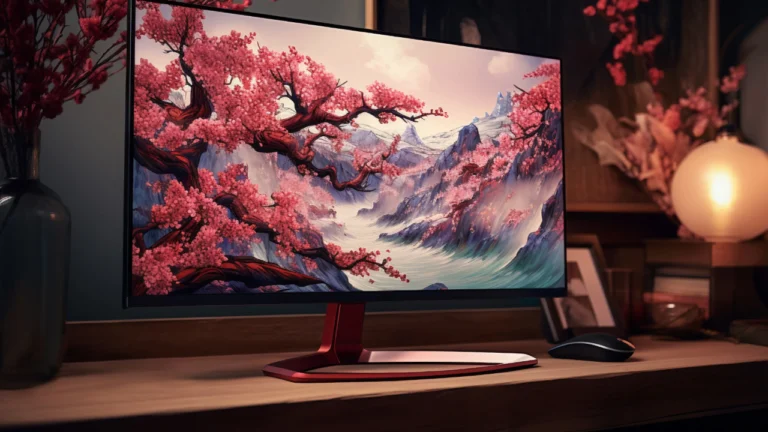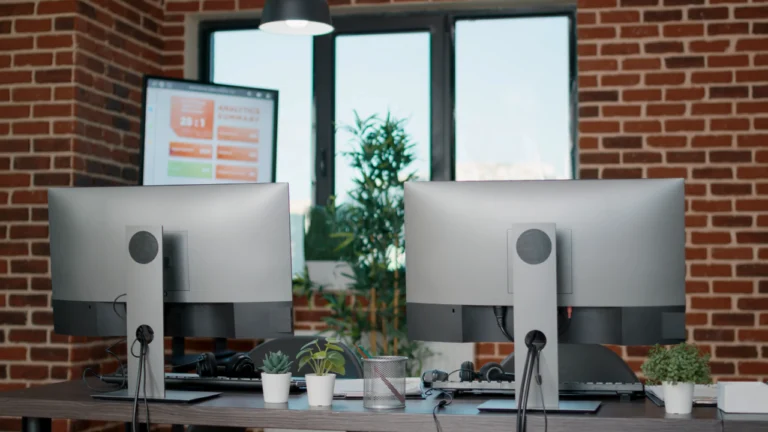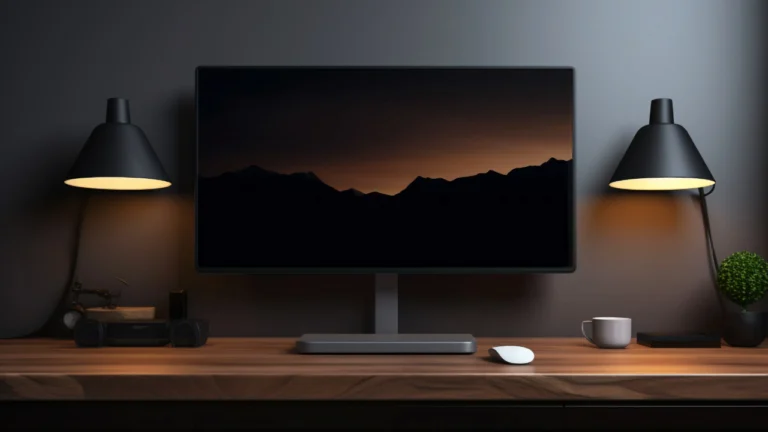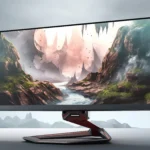Why Curved Monitors Are Better for Eye Strain and Comfort

If you’ve ever felt eye fatigue after long hours of staring at a computer screen, you’re not alone. Many people experience discomfort, dryness, and even headaches after prolonged screen use. But what if there was a way to reduce eye strain while improving your overall viewing experience? Enter curved monitors – a technology that not only enhances visual immersion but also makes screen time easier on the eyes. If you’re looking for the best options available, check out this comprehensive guide on best curved monitors.
In this article, we’ll explore why curved monitors are better for reducing eye strain and improving comfort, how they work, and whether they’re the right choice for you.
Understanding Eye Strain and Digital Fatigue
Before diving into curved monitors, it’s important to understand what causes eye strain. Digital eye strain, also known as computer vision syndrome (CVS), is a common issue that arises due to prolonged exposure to screens. Symptoms include:
Dry or irritated eyes
Blurred vision
Headaches
Difficulty focusing
Neck and shoulder pain
Factors contributing to digital eye strain include screen brightness, blue light exposure, glare, and the unnatural movement of our eyes across flat screens.
How Curved Monitors Reduce Eye Strain
Before diving into curved monitors, it’s important to understand what causes eye strain. Digital eye strain, also known as computer vision syndrome (CVS), is a common issue that arises due to prolonged exposure to screens. Symptoms include:
Dry or irritated eyes
Blurred vision
Headaches
Difficulty focusing
Neck and shoulder pain
Factors contributing to digital eye strain include screen brightness, blue light exposure, glare, and the unnatural movement of our eyes across flat screens.
1. A More Natural Field of View
One of the biggest advantages of curved monitors is their design, which mimics the natural curvature of the human eye. Unlike flat screens that force your eyes to work harder to focus on different areas of the screen, a curved display ensures that all parts of the screen remain at a relatively equal distance from your eyes. This reduces the amount of refocusing your eyes need to do, minimizing strain over time.
2. Reduced Glare and Reflections
Glare is one of the biggest culprits of eye strain, as it forces your eyes to constantly adjust to different levels of brightness. Flat monitors reflect more light from surrounding sources, such as windows or overhead lights. Curved monitors, on the other hand, are designed to direct light away from your eyes, significantly reducing glare and making it easier to view content for extended periods.
3. Less Peripheral Distortion
When using a large flat monitor, objects and text at the edges of the screen may appear distorted or stretched. This is because the edges of a flat monitor are farther away from your eyes than the center, causing additional strain as your eyes continuously adjust. A curved monitor brings those edges closer, maintaining a more uniform distance between your eyes and the screen. This reduces distortion and creates a more comfortable viewing experience.
4. Improved Depth Perception and Focus
A curved monitor provides a sense of depth, similar to how our eyes naturally perceive the world. This depth-enhancing effect helps reduce cognitive load, making it easier for our brains to process visual information. As a result, you can maintain focus for longer periods without experiencing as much fatigue.
5. Better Eye Movement Efficiency
On a flat monitor, your eyes must move back and forth frequently to take in all the information, especially on larger screens. This constant movement contributes to strain and fatigue. With a curved screen, the design naturally guides your eyes across the display in a more fluid and efficient manner. This reduces the effort needed to scan the screen, leading to less eye fatigue over time.
Additional Comfort Benefits of Curved Monitors
1. Enhanced Immersion
Curved monitors wrap around your field of vision, providing a more immersive experience. Whether you’re gaming, working on spreadsheets, or watching movies, a curved display makes it easier to stay engaged without feeling overwhelmed by screen clutter.
2. Wider Viewing Angles
Unlike flat monitors, which can suffer from color and contrast loss when viewed from the side, curved monitors provide more consistent visuals across the entire display. This means you don’t have to shift your position as often to get the best view, reducing strain on your neck and shoulders as well.
3. Reduced Neck and Shoulder Tension
Because a curved monitor allows for a more natural viewing position, you don’t have to move your head as much to see different areas of the screen. Over time, this can help reduce tension in your neck and shoulders, preventing discomfort associated with long hours of computer use.
Are Curved Monitors the Right Choice for You?
Because a curved monitor allows for a more natural viewing position, you don’t have to move your head as much to see different areas of the screen. Over time, this can help reduce tension in your neck and shoulders, preventing discomfort associated with long hours of computer use.
1. Screen Size Matters
The benefits of a curved monitor become more noticeable with larger screen sizes. If you’re using a monitor smaller than 27 inches, the curvature may not provide a significant advantage. However, for ultrawide and large displays (32 inches or more), the curve can make a major difference in comfort and immersion.
2. Ideal for Certain Professions and Activities
Curved monitors are particularly beneficial for:
Gamers – The immersive experience makes gaming more enjoyable while reducing strain.
Graphic Designers & Video Editors – Better depth perception and reduced distortion improve workflow.
Multi-taskers – Wider, curved screens make it easier to manage multiple applications without excessive scrolling or eye movement.
3. Not Ideal for Shared Viewing
If multiple people frequently view your screen at different angles, a curved monitor may not be the best choice, as the curvature can limit visibility from certain positions.
Tips for Maximizing Eye Comfort with Any Monitor
Even if you’re not ready to invest in a curved monitor, there are other steps you can take to reduce eye strain:
Use the 20-20-20 rule: Every 20 minutes, take a 20-second break and look at something 20 feet away.
Adjust brightness and contrast: Keep your monitor’s brightness at a comfortable level to avoid excessive strain.
Position your monitor correctly: The screen should be at eye level and about an arm’s length away.
Enable blue light filters: Many monitors have built-in blue light reduction modes to minimize eye fatigue.
Ensure proper lighting: Avoid placing your monitor in direct light sources that can cause glare.
Conclusion
Curved monitors are more than just a stylish upgrade – they offer genuine benefits for eye comfort and strain reduction. By providing a natural field of view, minimizing glare, reducing distortion, and improving depth perception, curved screens create a more comfortable and immersive experience for users.
While they may not be the perfect fit for every scenario, those who spend long hours in front of a screen can greatly benefit from the ergonomic advantages of a curved monitor. If eye strain is a concern for you, making the switch to a curved monitor could be a game-changer for your productivity and comfort.
So, if you’re considering a monitor upgrade, it might be time to embrace the curve!







